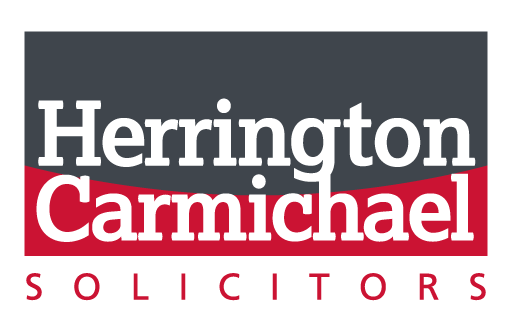The Directors of a Company that cannot pay its debts can choose to put the Company into voluntary liquidation. Indeed Directors have statutory responsibilities not to permit a Company to trade insolvently. If they allow the Company to trade insolvently they can become personally liable for the debts.
A creditor can also put a company debtor into compulsory liquidation. The amount owed must be not less than £750 and the creditor must either have an admission that the debt is owed, or a Court judgment.
The creditor must serve a formal Statutory Demand on the Company’s registered office. That gives the Company 21 days to do one of three things.
- Pay the debt in full.
- Reach agreement with the creditor as to how it will be paid.
- Apply to the High Court for an injunction to prevent a Winding Up Petition being issued – normally on the basis the debt is not due or is disputed, or (rarely) the use of a Petition would be an abuse of the Court process.
If the Company does none of the above, the creditor is free to issue the Winding Up petition. The creditor must also then serve the petition, advertise the petition in the London Gazette and attend the Hearing to prove the debt is due and has not been paid. There are strict time limits for serving and advertising the petition.
Once the petition has been advertised, the chance of a Company resolving matters before the Hearing becomes very much more difficult. Other creditors can join in the petition and even if the original creditor is paid off, the other creditors can take over and continue with the Hearing.
The Judge must be satisfied that not only is the debt undisputed, due and unpaid but that it is just and equitable to make the Winding Up Order. Once the Winding Up Order is made the Directors powers pass to the Liquidator. The Liquidators role is to collect in the Company’s assets and use those assets to clear debts and liabilities. Other creditors are bound by the Winding Up Order and cannot start separate enforcement action of their own.
Secured creditors will still be entitled to enforce their security – generally the mortgage company and/or the bank. Unsecured creditors, e.g. suppliers, customers who have paid for orders not yet delivered etc will have to stand in line and see whether there will be enough to pay part or any of their debt.
If an unsecured creditor issued the Winding Up petition they do not get priority for their debt but stand in line with everyone else.
Sometimes suppliers might be able to recover the goods they have delivered to the Company but have not been paid for. This depends on whether they have a “retention of title” clause in their terms and conditions, what sort of goods have been delivered and what has happened to those goods since delivery.
Administration
This is one of several options available to a Company in financial trouble that wants to avoid being wound up.
The Company brings in an Administrator, who must be a licensed insolvency practitioner. The Administrator may be appointed by the Company, the Court or more likely by the bank, with the aim of:
- Trying to rescue the Company. This might involve selling off parts of the business; taking steps to slim it down or find re-financing. The Administrator can also seek agreement with creditors to enable it to continue to trade paying them a % in the pound of their debt over a specified period via a CVA.
- Achieving a better result for creditors than would be possible if the Company went straight into liquidation.
- Realising property to make a distribution to one or more secured or preferential creditors.
The main aim is to produce a breathing space as both secured and unsecured creditors are prevented from taking enforcement action of their own.
Once appointed the Administrator takes control of the Company property and manages the Company in accordance with proposals that are approved either by the creditors or the Court.
Generally speaking the Administrator will try and find a buyer, thereby securing more money for the creditors, rather than get involved in the long and possibly costly business of trying to turn the Company round. The crucial issue is whether the Company’s bankers support the administration. If they do, then a rescue is much more likely to be viable.
If a rescue is not viable, administration often moves into a formal liquidation.
Receivership
This may look a lot like liquidation but it is the process whereby assets are realised to pay off particular creditors. A Company may be able to return to profitable trading once the receivership is over although in practice that is rarely the case.
The Receiver is normally appointed by a secured creditor – often a bank or other financial institution who holds e.g. a debenture but the Company has defaulted on the loan repayments – to recover the money owed to it. A Receiver has quite wide powers to manage the Company and sell its assets. Even if the business is sold off the Company generally remains an empty shell and will then often move straight into liquidation.
Corporate Voluntary Arrangement (CVA)
CVA’s often go hand in hand with Administration as putting in an administrator puts a halt on creditors taking their own action. This gives the administrator time to put together a proposal with timetable to be approved by the creditors.
In essence the proposal sets out a plan by which the Company will continue to trade and will pay its creditors over a set time period a percentage of the debts owed. The creditors generally have to agree to write off the remaining balance of the debt
The proposal has to be voted on by the creditors but if approved it is then binding on all its creditors. The creditors must approve the proposal by a majority in excess of three quarters of the value of the creditors. This means that several creditors with very large sums owed to them can approve the proposal even if lots of much smaller creditors vote against it.
If the proposal is likely to give creditors a better return than moving straight into liquidation, the creditors are likely to vote for it and hope that it is complied with.
If there is no administrator, a supervisor has to be appointed who has statutory powers and responsibilities to the Court. Their role is to oversee the implementation of the proposal approved by the creditors.
If the proposal is successfully implemented, once complete the CVA ends and the Company continues its business in the same way as any other business. If the proposal fails, the Company will generally move straight into liquidation.
This reflects the law at the date of publication and is written as a general guide. It does not contain definitive legal advice, which should be sought as appropriate in relation to a particular matter.








